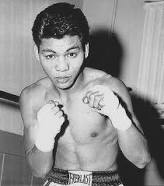To a teen, Mark Anthony and Cleopatra, Silas Marner, Portia and Annabel Lee were distant personas and we were busy liking John, Paul, George and Ringo or the fab four (The Beatles) as they were called then.
 |
| Portia and Shylock in William Shakespeare's Merchant of Venice |
Other times we were busy planning for afternoon soirees and eagerly waiting for the appearance of our high school crushes during lunch break and dismissal.
High school algebra was boring because of the teacher but English was interesting and so was Spanish.
The Monkees, like the Beatles, also ruled the airwaves and the Ed Sullivan show was the top ranking US variety show.
Locally, the Sampaguita stars who ruled the late sixties and the seventies' big screen were the Batang Bakasyonistas, Batang Artista and Batang Iskwater - the likes of Rosemarie Sonora, Gina Pareno, Blanca Gomez and Loretta Marquez and the guys, Pepito Rodriguez, Bert Leroy Jr., Dindo Fernando and Edgar Salcedo.
RJ Jacinto and the Moonstrucks were Manila's top bands, and house parties were the craze with neighbourhood bands providing the music. Bye Bye, Jerk and Mash Potatoes were the dances much like today's gangnam fame.
Boogie woogie was passe, clean cut was out, and bell bottoms, printed shirts, clogs and long hair were the fads.
 | ||
| Formal attire of the mid-70s. Princess Anne and Capt. Mark Philips' engagement announcement in 1973 |
At school and at parties, boys took to one side and girls at the other side. Boys went to the girl's house some weekend evenings if he were interested in a girl, and brought gifts, too.
Phone pals and song hits were the buzz words, and local TV dance shows had titles like Dance O' Rama and Night Owl.
Manila's streets were relatively safer as gangs or "tambays," hang out at neighbourhood convenience or sari sari stores, and only victimized girls through their hoots or whistles or pranks.
Street drugs were unknown and local liquor were San Miguel Beer, Tanduay Rhum, Ginebra San Miguel and the liquor cum tonic called Sioktong.
Sioktong came in bottles and can be bought by glass. (Note: you bring your own glass and the grocer or sari sari store owner poured the Siok Tong)
Gabriel "Flash" Elorde was the masses' sports hero and Mang Paeng (Rafael Yabut), and Damian Soto were the radio super newscasters and commentators.
 |
| The young Gabriel "Flash" Elorde, world's junior lightweight champion for seven years |
Gabi ng Lagim, Lagalag, and Tia Dely were the radio drama and suspense hits, and Botica sa Baryo was Sunday evening's comic relief.
On TV, the Three Stooges and Superman were the the young people's favorites.
Local chocolates had names like Nectar and Nestor, and buns and bread were called pan de buntal, pan de limon, and kababayan.
Mid-morning and mid-afternoon reading materials were Tagalog comic books like Hiwaga Klasiks, Pilipino Komiks, Espesyal and the Liwayway Magazine. They were the Lit of neighbourhood kids.











